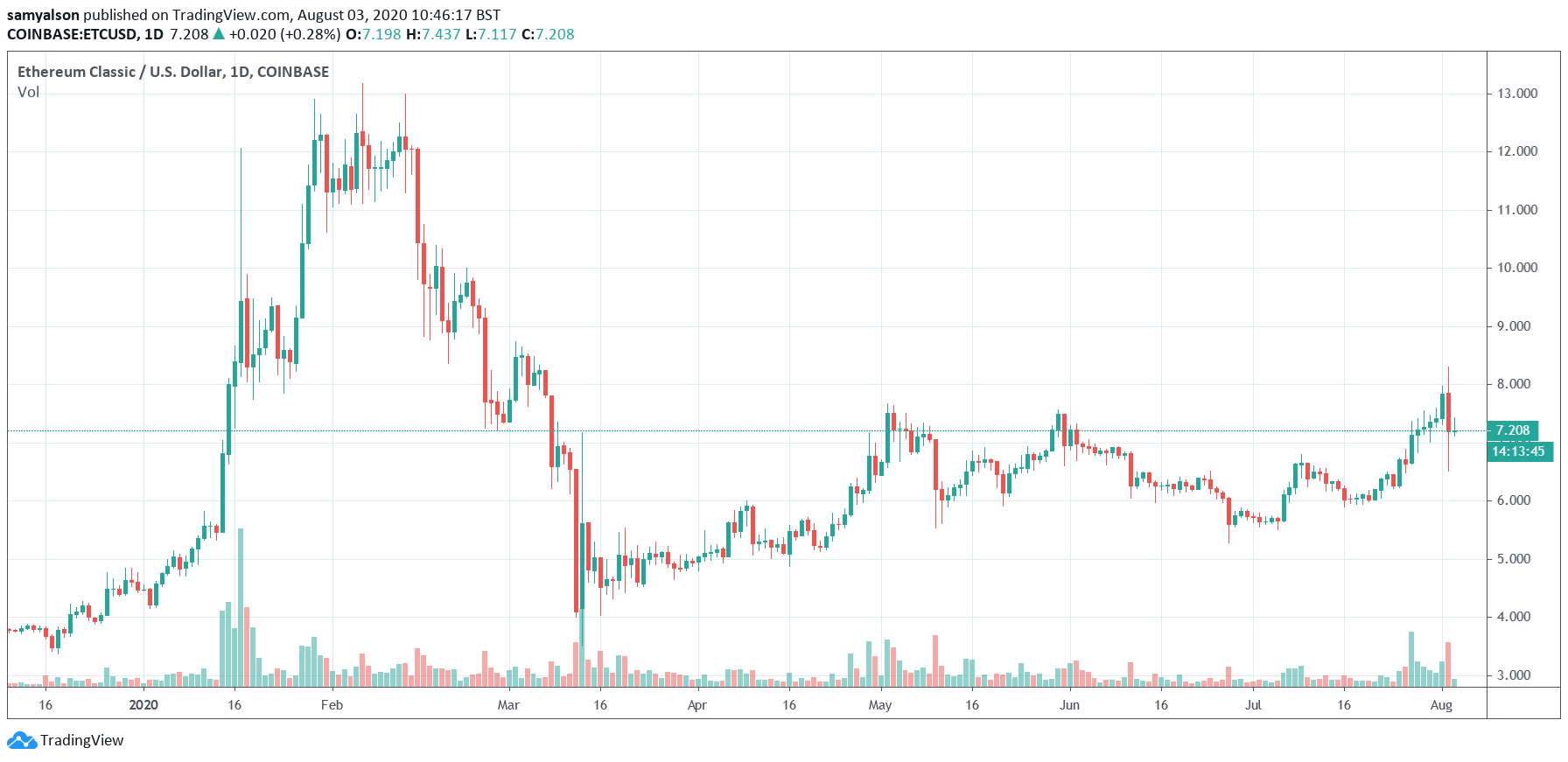Ethereum Classic suffered a 51% attack in the early hours of August 1st.
A blog post from the ETC Cooperative said attackers flooded the network with offline mined blocks. As a result, the network was unable to process the volume of transactions, leading to a reorganization of the chain and split between nodes.
“Miner 0x75d1e5477f1fdaad6e0e3d433ab69b08c482f14e released around 12 hours worth of offline mined blocks leading to a major reorg. OpenEthereum nodes were unable to cope with that large a reorg, leading to a chain split with OpenEthereum nodes on one side and Core-Geth, Multi-Geth and Hyperledger Besu nodes on the other.”
At present, investigations are still on-going with regards to the full extent of the damage caused.
So far, those lines of investigation have not turned up any evidence of double-spending.
In response and as a precautionary measure, some exchanges, including Poloniex, have suspended ETC deposits and withdrawals.
Ethereum Classic Core Developer, Stevan Lohja, went on to say an unidentified bug was the cause of the chain split at the point of network flooding.
Lohja recommended node operators running OpenEthereum, and Multi-Geth nodes migrate immediately to either Core-Geth or Hyperledger Besu.
Despite the upheaval, he sought to reassure stakeholders that it’s business as usual.
“The majority chain is operating as normal. The major miners unintentionally mining the incorrect chain are migrating to Core Geth as well as other ETC service providers.”
Ethereum Classic Has Previously Been 51% Attacked
Ethereum Classic was previously 51% attacked, back in January 2019.
Although the full extent of the current attack is unknown, the one in January 2019 was classified by Coinbase as a “deep reorganization,” with confirmed doubled spends totaling 219,500 ETC (or $1.1 million at the time).
“This is called a “chain reorganization,” or “reorg” for short. All reorgs have a “depth,” which is the number of blocks that were replaced, and a “length,” which is the number of new blocks that did the replacing.”
Back then, the incident triggered discussions over the viability and security of proof-of-work (PoW) systems going forward.
As the two most prominent PoW protocols in the space, some even predicted the demise of Bitcoin and Ethereum.
Confusion from investors saw both Ethereum Classic and Ethereum experience a sell-off as a result of the attack on Ethereum Classic.
Matti Greenspan was keen to stress that Ethereum Classic and Ethereum are distinctly separate entities. What’s more, arguing the case for PoW, he said:
“The reason is that Ethereum has a hashrate of about 20 times that of Ethereum Classic. So, while it might be possible to temporarily get enough hashrate to control 51% of ETC’s network, it would be practically implausible to affect ETH in this way.”
The weekend attack saw Ethereum Classic suffer a sell-off, closing 9% down on the day.
However, price action printed a Daul Maul wick. It extended as high as $8.30 and as low as $6.50, to close the day at $7.18.

Ethereum Classic daily chart YTD. (Source: tradingview.com)
Considering this is the second 51% attack to occur in less than two years, investors are asking about the measures implemented following the first attack.
Or is this an inevitability for all PoW protocols that lack the hashing power of Ethereum and Bitcoin?
إرسال تعليق